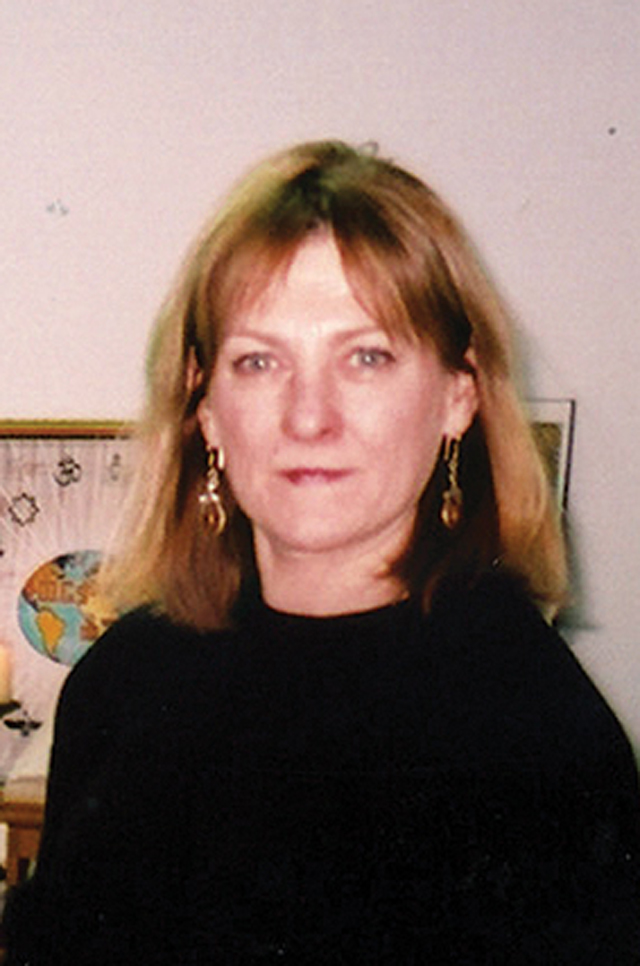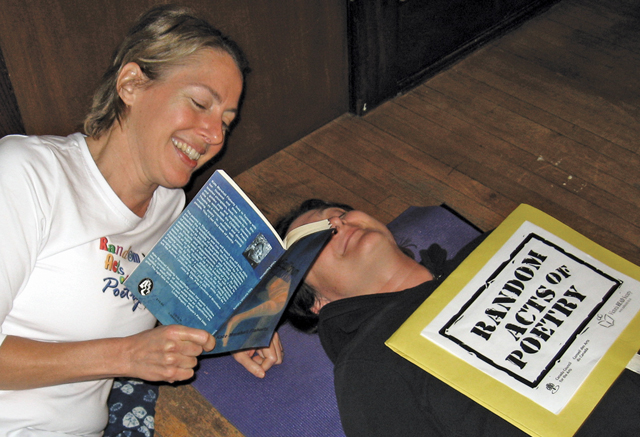A sacred space
At the Scarboro Mission Centre, retreat organizers are helping teenagers, through prayer and meditation, to get in touch with the Divine presence within
March/April 2010
Return to Table of Contents
Print Article
Kathy Murtha, Notre Dame Associate and coordinator of Scarboro’s Mission Centre, and Lay Spiritan Kate Marshall Flaherty animate high school retreat days at the Mission Centre. Kate explains the importance of the retreats: “Jesus spent 40 days in the desert; the Buddha meditated. In all faith traditions there is this removal in order to be still. A retreat is like a day in the desert—pulling us out of all that keeps us in competition with others and with ourselves in the course of daily living.”
Kathy looks back. “When I started giving retreats I had a lot to learn. The students were my best teachers—you just had to look at their faces to see whether they were with you or not.
“I needed to help create sacred experiences for them where I was more the holder of the environment and less the person doing it all. I needed to create a space, a sacred space.”
Kate chimes in. “In that space learning occurs: not just through words, but through prayer and meditation and process and fun and laughter. You have to break it down into these activities before anything can happen on the spiritual level.”
“Teenagers have an inner life,” says Kathy, “where they can begin to get in touch with the indwelling Divine presence. That is absolutely radical. The world around them is so outer directed, even at school: ‘What’s the agenda? When are we finished? Let’s get to the point.’ The most radical thing is to get the students to think that they can live inner directed. That’s been a real change for me.”
Hungry for meditation
Kate, mother of three teenagers, recalls her own assumptions. “I was amazed to see how hungry the students were for meditation. I had assumed my biggest challenge would be to get them to be quiet and suffer through a meditation, hoping they might enjoy it. I assumed some would and some might not. But, from the very beginning, on every evaluation, it was the part they said they really loved. I discovered that young people are hungry to be filled, hungry to get out of their head and into their heart, hungry to have that quiet.
“Having been a drama teacher I thought the fun and the games, the embodiment of the Golden Rule, the skits, the scavenger hunt, the multimedia would turn them on. They do enjoy all these, but they always say the best part of the retreat is the meditation. I find that affirming, exciting, and surprising.
“...young people are hungry to be filled, hungry to get out of their head and into their heart, hungry to have that quiet.”
“At the beginning of the day I say, ‘Close your eyes and point to yourself.’ One or two point to their mouths— we’re all about who we say we are. You’d imagine everyone would point to their head—we are who we think we are: we think we’re hot tempered or good at English or bad at Math; we need to lose five pounds.
“But I say to them, ‘Where did you all point?’
‘Our heart!’
‘How is it we all know that our true self is in our heart and not in our head?’
‘Oh, that’s where we love, Miss. That’s where Jesus lives, Miss.’
“At the meditation they get a chance to get out of their head and go into a place of stillness. Often they’ll say, ‘Could you do that again? Could you do that again?’
Kathy finds that this meditation is new for most of the students. “So we do some visualization, using the imagination. My favourite is one that allows them to imagine themselves resting in the arms of God—which Pope Gregory the Great described as the ultimate prayer. No words, just imagine yourself as the little child you are, resting in the arms of God, allowing God’s arms to embrace you. That, to me, is the highlight of a retreat. Everything else builds up to that. Without that, the day would not be a retreat day.”
Other meditations include being like water, showing how much more energy it takes to go against the flow than with it; being a channel of peace and being still.
Kathy recalls the ancient understanding of the heart as a place of wholeness. “There was no dualism between head and heart. In a sense the heart is our mind, the core of our whole self. We need to return to that.”
Kate puts it this way, “That is what the kids are saying when they point to their heart as their whole self. There you rest in your true self, and in the arms of God: ‘Be still and know that I am God.’”
Kathy agrees. “That is what being in the presence of God means. God’s first language is silence. Getting this across is what I see as my main role in the retreat.
“You don’t start off the day saying, ‘Everyone sit down and meditate.’ We work towards it.”
Kate adds, “We use music as a vehicle to guide them into that transition. That’s an important part of the journey. They come in so stiff— you have to lead them on a process, so getting a game going is very important. They laugh and become like children when they forget themselves. It’s magical to watch. You can’t remove that from the day.”
Both retreat leaders are adamant that the first thing is to have juice, cookies, and hot chocolate ready for the students when they arrive. Feeding their bodies is absolutely important—up to half of them arrive not having had breakfast.
Sometimes teachers ask Kathy and Kate to get rid of the snack and the games and “get right to the point.” But the point of a retreat is the students themselves. The kids are the point. And they often say, “I got to know my classmates better in a day than I did all year,” or “You know, we need some of this every day,” or “This gives me a whole new lease on life.”
Scarborough Bluffs
An after-lunch activity is a walk to the Scarborough Bluffs. Most students have never seen these Bluffs although many might live only a couple of kilometres from them. A simple thing like walking in nature really touches them. And once again, we ask them to be still.”
Kathy voices a concern: “I fear for the future of our ministry here. Will there be time and money for this valuable educational experience? Teachers who really value what we’re doing have to cut corners to make it happen. And the chaplains have a hard time keeping the program alive.”
Kate agrees: “You’re fighting against a mentality that says, ‘This is a waste of time.’ So, you’re fighting to be able to have days like this, to introduce students to the interior world.” If, as some psychologists claim, 15 year olds experience an intellectual spiritual surge, it is important that they find a welcoming safe place to explore their own questions and longings. Both retreat animators are of one mind—it would be a shame not to be there for the young at that critical time.
This article has been adapted and reprinted with permission from SPIRITAN magazine
Return to Table of Contents
Print Article

